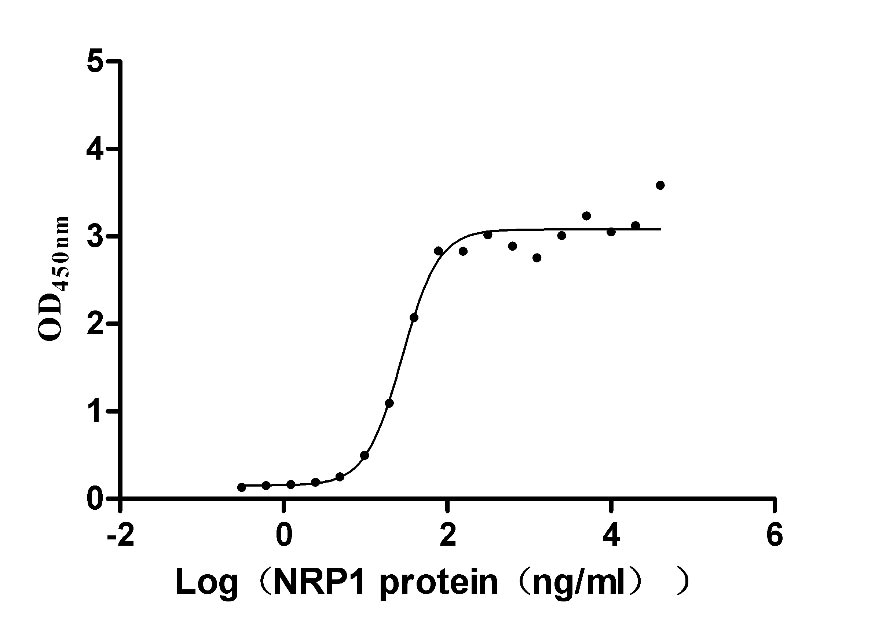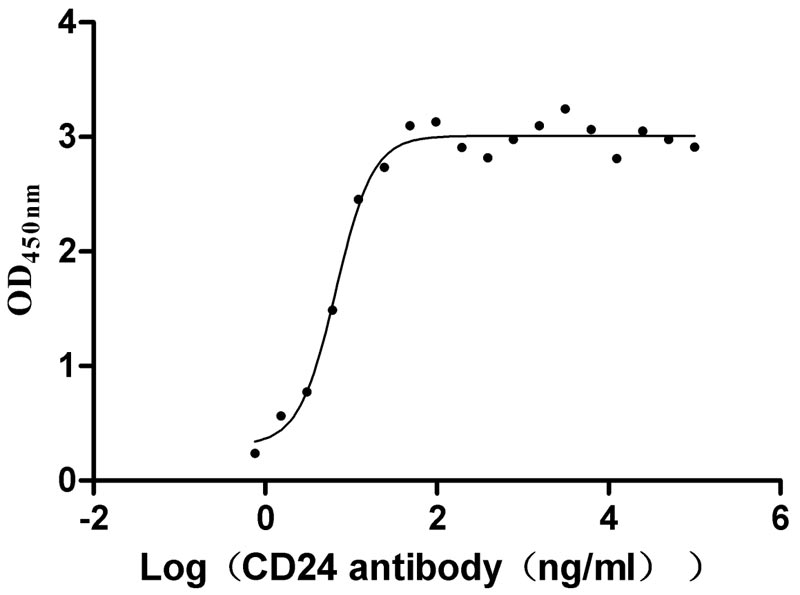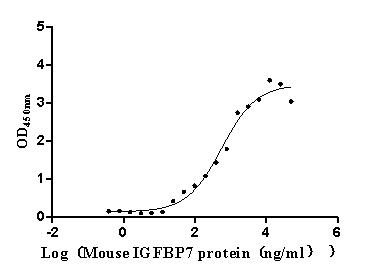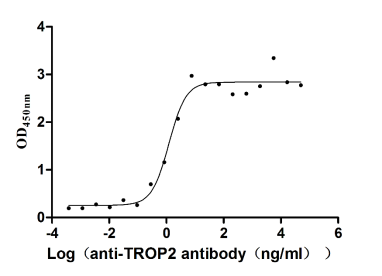Recombinant Mouse Activating molecule in BECN1-regulated autophagy protein 1 (Ambra1), partial
-
中文名稱:Recombinant Mouse Activating molecule in BECN1-regulated autophagy protein 1(Ambra1) ,partial
-
貨號:CSB-YP001655MO
-
規格:
-
來源:Yeast
-
其他:
-
中文名稱:Recombinant Mouse Activating molecule in BECN1-regulated autophagy protein 1(Ambra1) ,partial
-
貨號:CSB-EP001655MO
-
規格:
-
來源:E.coli
-
其他:
-
中文名稱:Recombinant Mouse Activating molecule in BECN1-regulated autophagy protein 1(Ambra1) ,partial
-
貨號:CSB-EP001655MO-B
-
規格:
-
來源:E.coli
-
共軛:Avi-tag Biotinylated
E. coli biotin ligase (BirA) is highly specific in covalently attaching biotin to the 15 amino acid AviTag peptide. This recombinant protein was biotinylated in vivo by AviTag-BirA technology, which method is BriA catalyzes amide linkage between the biotin and the specific lysine of the AviTag.
-
其他:
-
中文名稱:Recombinant Mouse Activating molecule in BECN1-regulated autophagy protein 1(Ambra1) ,partial
-
貨號:CSB-BP001655MO
-
規格:
-
來源:Baculovirus
-
其他:
-
中文名稱:Recombinant Mouse Activating molecule in BECN1-regulated autophagy protein 1(Ambra1) ,partial
-
貨號:CSB-MP001655MO
-
規格:
-
來源:Mammalian cell
-
其他:
產品詳情
-
純度:>85% (SDS-PAGE)
-
基因名:
-
Uniprot No.:
-
別名:Ambra1; Kiaa1736Activating molecule in BECN1-regulated autophagy protein 1
-
種屬:Mus musculus (Mouse)
-
蛋白長度:Partial
-
蛋白標簽:Tag?type?will?be?determined?during?the?manufacturing?process.
The tag type will be determined during production process. If you have specified tag type, please tell us and we will develop the specified tag preferentially. -
產品提供形式:Lyophilized powder
Note: We will preferentially ship the format that we have in stock, however, if you have any special requirement for the format, please remark your requirement when placing the order, we will prepare according to your demand. -
復溶:We recommend that this vial be briefly centrifuged prior to opening to bring the contents to the bottom. Please reconstitute protein in deionized sterile water to a concentration of 0.1-1.0 mg/mL.We recommend to add 5-50% of glycerol (final concentration) and aliquot for long-term storage at -20℃/-80℃. Our default final concentration of glycerol is 50%. Customers could use it as reference.
-
儲存條件:Store at -20°C/-80°C upon receipt, aliquoting is necessary for mutiple use. Avoid repeated freeze-thaw cycles.
-
保質期:The shelf life is related to many factors, storage state, buffer ingredients, storage temperature and the stability of the protein itself.
Generally, the shelf life of liquid form is 6 months at -20°C/-80°C. The shelf life of lyophilized form is 12 months at -20°C/-80°C. -
貨期:Delivery time may differ from different purchasing way or location, please kindly consult your local distributors for specific delivery time.Note: All of our proteins are default shipped with normal blue ice packs, if you request to ship with dry ice, please communicate with us in advance and extra fees will be charged.
-
注意事項:Repeated freezing and thawing is not recommended. Store working aliquots at 4°C for up to one week.
-
Datasheet :Please contact us to get it.
靶點詳情
-
功能:Substrate-recognition component of a DCX (DDB1-CUL4-X-box) E3 ubiquitin-protein ligase complex involved in cell cycle control and autophagy. The DCX(AMBRA1) complex specifically mediates the polyubiquitination of target proteins such as BECN1, CCND1, CCND2, CCND3, ELOC and ULK1. Acts as an upstream master regulator of the transition from G1 to S cell phase: AMBRA1 specifically recognizes and binds phosphorylated cyclin-D (CCND1, CCND2 and CCND3), leading to cyclin-D ubiquitination by the DCX(AMBRA1) complex and subsequent degradation. By controlling the transition from G1 to S phase and cyclin-D degradation, AMBRA1 acts as a tumor suppressor that promotes genomic integrity during DNA replication and counteracts developmental abnormalities and tumor growth. AMBRA1 also regulates the cell cycle by promoting MYC dephosphorylation and degradation independently of the DCX(AMBRA1) complex: acts via interaction with the catalytic subunit of protein phosphatase 2A (PPP2CA), which enhances interaction between PPP2CA and MYC, leading to MYC dephosphorylation and degradation. Acts as a regulator of Cul5-RING (CRL5) E3 ubiquitin-protein ligase complexes by mediating ubiquitination and degradation of Elongin-C (ELOC) component of CRL5 complexes. Acts as a key regulator of autophagy by modulating the BECN1-PIK3C3 complex: controls protein turnover during neuronal development, and regulates normal cell survival and proliferation. In normal conditions, AMBRA1 is tethered to the cytoskeleton via interaction with dyneins DYNLL1 and DYNLL2. Upon autophagy induction, AMBRA1 is released from the cytoskeletal docking site to induce autophagosome nucleation by mediating ubiquitination of proteins involved in autophagy. The DCX(AMBRA1) complex mediates 'Lys-63'-linked ubiquitination of BECN1, increasing the association between BECN1 and PIK3C3 to promote PIK3C3 activity. In collaboration with TRAF6, AMBRA1 mediates 'Lys-63'-linked ubiquitination of ULK1 following autophagy induction, promoting ULK1 stability and kinase activity. Also activates ULK1 via interaction with TRIM32: TRIM32 stimulates ULK1 through unanchored 'Lys-63'-linked polyubiquitin chains. Also acts as an activator of mitophagy via interaction with PRKN and LC3 proteins (MAP1LC3A, MAP1LC3B or MAP1LC3C); possibly by bringing damaged mitochondria onto autophagosomes. Also activates mitophagy by acting as a cofactor for HUWE1; acts by promoting HUWE1-mediated ubiquitination of MFN2. AMBRA1 is also involved in regulatory T-cells (Treg) differentiation by promoting FOXO3 dephosphorylation independently of the DCX(AMBRA1) complex: acts via interaction with PPP2CA, which enhances interaction between PPP2CA and FOXO3, leading to FOXO3 dephosphorylation and stabilization. May act as a regulator of intracellular trafficking, regulating the localization of active PTK2/FAK and SRC. Also involved in transcription regulation by acting as a scaffold for protein complexes at chromatin.
-
基因功能參考文獻:
- these findings identify an Ambra1-dependent mechanism that drives inhibition/excitation imbalance in the hippocampus, contributing to abnormal brain activity reminiscent of neurodevelopmental disorders. PMID: 29488136
- Results showed that AMBRA1 is a novel hub binding protein of alpha-synuclein and plays a central role in the pathogenesis of multiple system atrophy through the degradative dynamics of alpha-synuclein. PMID: 27875637
- MicroRNA-30a ameliorates hepatic fibrosis by inhibiting Beclin1-mediated autophagy. PMID: 28766848
- Data support a role of AMBRA1/Ambra1 partial loss-of-function genotypes for female autistic traits. Moreover, they suggest Ambra1 heterozygous mice as a novel multifaceted and construct-valid genetic mouse model for female autism. PMID: 28994820
- Ambra1 binds to both FAK and Src in cancer cells. When FAK is present, Ambra1 is recruited to focal adhesions, promoting FAK-regulated cancer cell direction-sensing and invasion. However, when Ambra1 cannot bind to FAK, abnormally high levels of phospho-Src and phospho-FAK accumulate at focal adhesions, positively regulating adhesion and invasive migration. PMID: 28362576
- The results suggested that AMBRA1 is a core factor that controls both autophagy and metabolic regulation. PMID: 28789945
- we further measured the expression of autophagy protein BECLIN1 in hippocampus of all mice PMID: 26930371
- a de-regulation of c-Myc correlates with increased tumorigenesis in AMBRA1-defective systems, thus supporting a role for AMBRA1 as a haploinsufficient tumour suppressor gene. PMID: 25438055
- found Smad2 as the major transcriptional regulator of autophagy that targets beclin1 (BECN1) gene expression. Smad2, but not Smad3, acts as a repressor upstream of the BECN1 promoter region PMID: 25931117
- AMBRA1 interacts with cullin E3 ubiquitin ligases to regulate autophagy dynamics PMID: 25499913
- It plays a fundamental role in regulating the autophagic process in developing nervous tissue. PMID: 23910655
- These results reveal new roles for autophagy-related molecules Atg5 and Ambra1 during early neuronal differentiation of stem/progenitor cells. PMID: 22240590
- These data identify interaction of Parkin with Ambra1 as a key mechanism for induction of the final clearance step of Parkin-mediated mitophagy. PMID: 21753002
- Ambra1 functional deficiency in mouse embryos leads to severe neural tube defects associated with autophagy impairment, accumulation of ubiquitinated proteins, unbalanced cell proliferation and excessive apoptotic cell death PMID: 17589504
顯示更多
收起更多
-
亞細胞定位:Endoplasmic reticulum. Cytoplasm, cytoskeleton. Cytoplasmic vesicle, autophagosome. Mitochondrion. Cytoplasm, cytosol. Nucleus. Cell junction, focal adhesion.
-
組織特異性:Expressed throughout the brain, including midbrain and striatum.
-
數據庫鏈接:
Most popular with customers
-
Recombinant Macaca fascicularis Angiotensin-converting enzyme (ACE2), partial (Active)
Express system: Mammalian cell
Species: Macaca fascicularis (Crab-eating macaque) (Cynomolgus monkey)
-
Recombinant Human Neuropilin-1 (NRP1) (Active)
Express system: Mammalian cell
Species: Homo sapiens (Human)
-
Recombinant Human Signal transducer CD24 (CD24)-Nanoparticle (Active)
Express system: Mammalian cell
Species: Homo sapiens (Human)
-
Recombinant Human Angiopoietin-2 (ANGPT2) (Active)
Express system: Mammalian cell
Species: Homo sapiens (Human)
-
Recombinant Mouse Tyrosine-protein kinase Mer (Mertk), partial (Active)
Express system: Mammalian cell
Species: Mus musculus (Mouse)
-
Recombinant Mouse Complement component C1q receptor (Cd93), partial (Active)
Express system: Mammalian cell
Species: Mus musculus (Mouse)
-
Recombinant Human Tumor-associated calcium signal transducer 2 (TACSTD2), partial (Active)
Express system: Mammalian cell
Species: Homo sapiens (Human)
-
Recombinant Mouse CUB domain-containing protein 1 (Cdcp1), partial (Active)
Express system: Mammalian cell
Species: Mus musculus (Mouse)





-AC1.jpg)













